In a first-of-its-kind copyright trial, a jury will decide whether tattoo artist Catherine Alexander can effectively control the use of Randy Orton’s likeness in video games.
UPDATE – September 30, 2022 – Jury finds in favor of Plaintiff Catherine Alexander, awards actual damages of $3,750 against Defendants Take-Two Interactive and WWE.
Full Story Here
After over four years of litigation and five COVID-related continuances, it’s finally time for the main event. In a trial starting Monday in the Southern District of Illinois, a jury will determine whether Take-Two Interactive’s realistic depiction of wrestler Randy Orton in the “WWE 2K” video game series infringes tattoo artist Catherine Alexander’s copyrights in Orton’s tattoos. It’s the first ever copyright lawsuit involving the unauthorized reproduction of tattoos in creative content to reach trial. (And no, this one won’t be the second.)
I first wrote about the case two years ago, when District Judge Staci Yandle denied Take-Two’s motion for summary judgment. That order actually topped my list of the 5 Worst Copyright Decisions of 2020 because, by sending the case to a jury, the court effectively ruled that anyone with a tattoo is not in control of the uses to which his or her likeness is put.
There’s a lot at stake. If a jury finds Take-Two and WWE liable for copyright infringement, the case could have a severe chilling effect on the ability of individuals to license, and content creators to use, realistic depictions of tattoos that have become part of their likenesses—not only in video games, but potentially other expressive works like motion pictures and photographs as well.
Over the past several weeks, there has been a flurry of pre-trial filings and orders in the case that will influence the types of evidence and arguments the jury will and won’t hear at trial. As the parties wait in their respective corners for the opening bell to ring, here’s what you need to know:
Alexander Has Already Established Ownership and Copying
In their trial brief filed earlier this month, defendants asserted that evidence at trial would show that Randy Orton was the final decision-making authority regarding the designs inked on his body, making him the dominant author and owner of his tattoos.
A plaintiff typically has the burden at trial to prove ownership of a valid copyright. However, in granting Alexander’s motion for partial summary judgment two years ago, the court found that it was undisputed that Alexander holds valid copyrights for the five tattoos at issue and that defendants copied her copyrighted works.
Defendants argued that the issue of copyright ownership was never actually at issue in Alexander’s summary judgment motion, but last week Judge Yandle amended her previous ruling to “clarify this Court’s finding that, as a matter of law, Alexander owns a valid copyright to the five tattoos at issue in this lawsuit.” Therefore, held the court, defendants are “liable for copyright infringement unless they can establish an affirmative defense to their usage.”
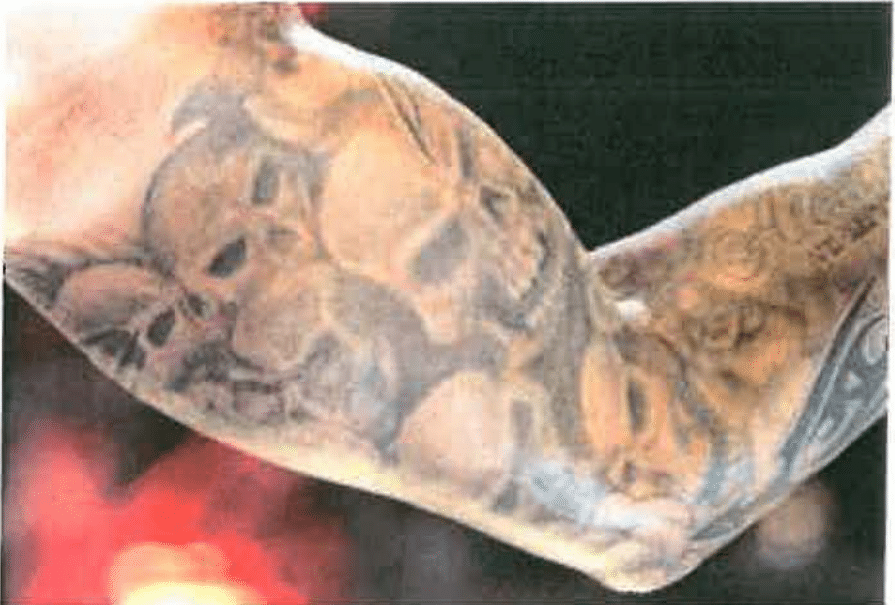
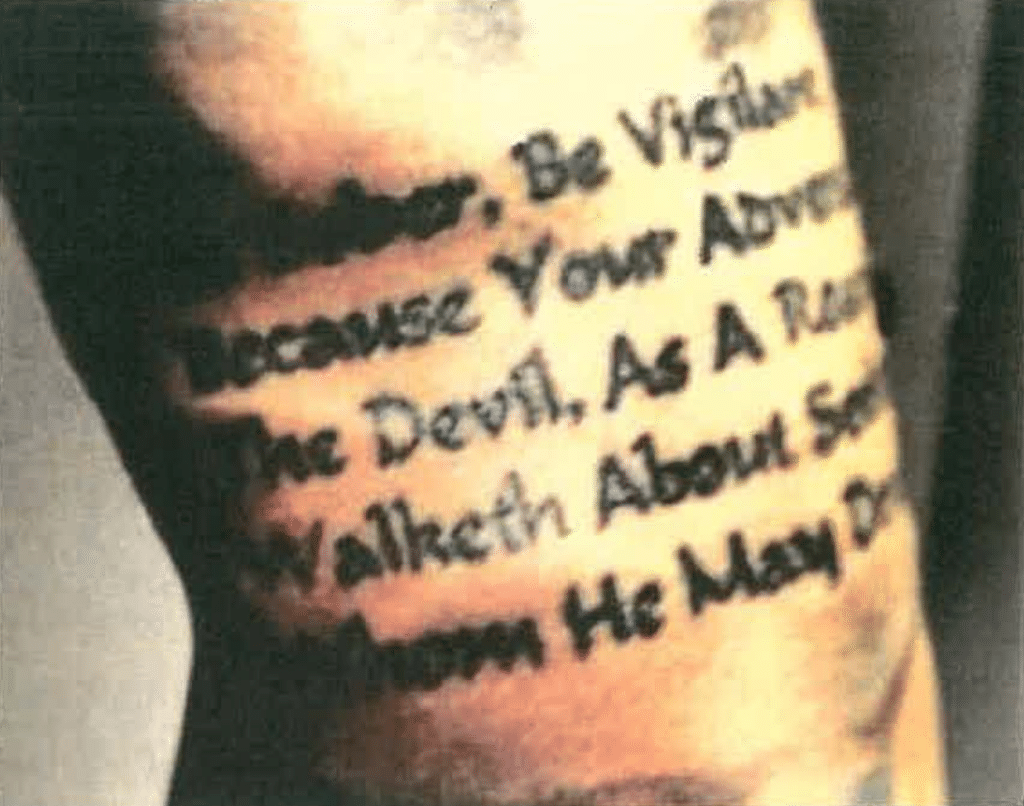
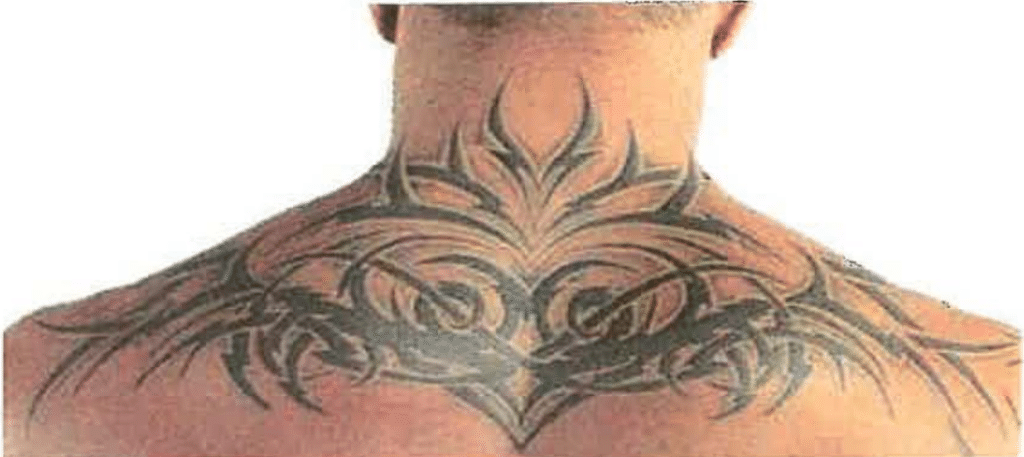
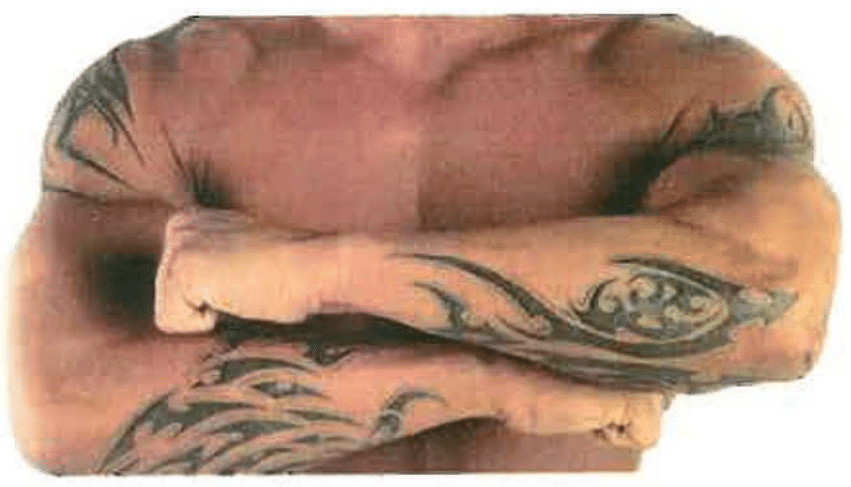
Defendants Can’t Assert a De Minimis Defense at Trial
Not only has the liability phase of trial been essentially reduced to affirmative defenses, but defendants won’t actually be able to assert one of their key defenses at trial—that Take-Two’s use of Orton’s tattoos was de minimis. As I’ve previously discussed here and here, this means copying that’s so trivial or fleeting that it can’t support a claim for infringement.
Take-Two had prior success with its de minimis defense in Solid Oak Sketches v. 2K Games, a very similar lawsuit involving tattoos used in the “NBA 2K” series of video games. In that case, a Southern District of New York judge ruled in the defendants’ favor on summary judgment. The court found that Take-Two’s use of the tattoos was de minimis because they weren’t an integral part of the games as a whole, appeared for only brief moments during game play, and accounted for only a miniscule portion of game data.
Take-Two wasn’t nearly as fortunate in the Alexander case. In her summary judgment ruling, Judge Yandle expressed doubt as to whether the de minimis defense was even viable in the Seventh Circuit, calling the defense an “open question.”
Then, last week, the judge went further. She issued an “amendment and clarification” to her prior summary judgment ruling to reflect that “as a matter of law, the de minimis defense is not viable in this case and Defendants cannot assert the defense at trial.”
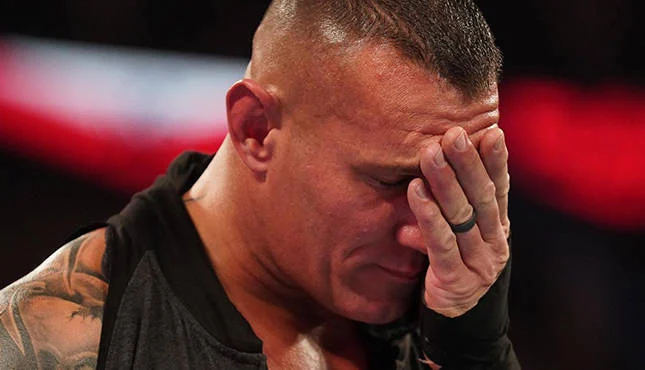
Implied License and Fair Use Are the Key Remaining Defenses
With the de minimis defense out of play, this leaves defendants to argue implied license, fair use, waiver and estoppel. The first two defenses are likely the strongest and most important.
For their implied license defense, defendants will assert that there was an implicit understanding based on the parties’ conduct and industry custom that Orton could use Alexander’s tattoos however he wished—including sublicensing the use of the tattoos as part of his overall likeness to WWE and Take-Two. Alexander disputes this account, claiming that the evidence at trial will show that she “did not grant Mr. Orton an implied license to copy the Asserted Works and certainly did not give him the right to sublicense copying of the Asserted Works.”
Defendants also plan to assert that the use of Orton’s likeness in WWE 2K (tattoos and all) is a protected fair use of Alexander’s designs. The court previously held that the fair use defense presented a triable issue of fact for a jury to decide. She also noted that Alexander contended that she created the tattoos for the purpose of displaying them on Orton’s body and that Take-Two used them for the same purpose; to display them on Orton’s body in its video games.
While these comments appear to reflect an overly-simplistic analysis of the first fair use factor, the court will get a chance to revisit the defense in more detail. That’s because fair use is a mixed question of law and fact, which means that the jury will resolve any disputed factual issues underlying the defense, while the ultimate decision on fair use will be made by the court (and, if the case gets appealed, by the Seventh Circuit).
Randy Orton Will Testify at Trial
Randy Orton, who’s currently sidelined from wrestling with a back injury, will testify live as a witness at trial. Among other things, expect Orton to provide an evidentiary foundation for Take-Two and WWE’s implied license defense. Orton will confirm that Catherine Alexander knew that the tattoos she was inking would be visible in any media, promotional materials, or merchandise depicting Orton. He will also testify that he understood that once Alexander’s tattoos became part of his body, he had the right to let third parties display and recreate those tattoos to accurately depict his likeness, and that Alexander never said anything to the contrary. Expect Alexander’s counsel to get Orton to concede that the parties never discussed whether he had her permission to allow others to use the tattoos in video games.
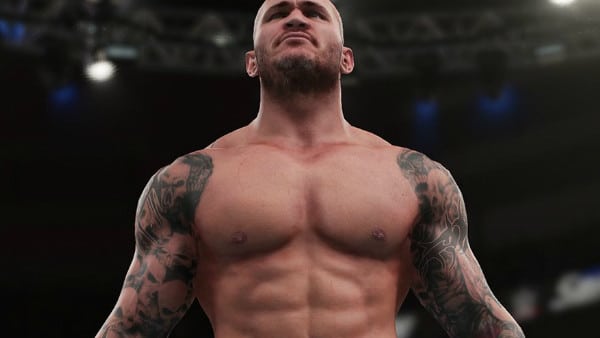
Experts, Experts, and More Experts
In addition to Alexander, Orton, and corporate representatives of Take-Two and WWE, the parties will call a host of expert witnesses to support their respective theories on fair use, implied license, and damages.
Plaintiff’s experts include:
- Jose Zagal, a professor of video game development at the University of Utah. He will testify that a realistic portrayal of Randy Orton was important to the success and sales of WWE video games because fans expect that characters in video games will look like their real-world counterparts. Zagal opines that as a result, a portion of the success, sales, and profits of the video games are attributable to Alexander’s copyrighted tattoos.
- Ryan Clark, plaintiff’s damages expert. He will opine on Take-Two’s profits from the sale of video games featuring Alexander’s tattoos, and will rebut the opinion of defendants’ expert that none of the profits are specifically attributable to the depiction of the tattoos in the video games.
Defendants’ experts include:
- Ian Bogost, a professor of media studies and computer science at Washington University. He will testify that, given Take-Two’s intent to create a realistic WWE simulation, its use of Orton’s tattoos was reasonable to depict Orton’s likeness completely and accurately. At the same time, he’ll assert that no separate licensing market exists for the depiction of an athlete’s tattoos in video games.
- Nina Jablonski, a professor of anthropology at Pennsylvania State University. She will testify on topics including the role tattoos play in an individual’s self-expression, as well as the customs and practices within the tattoo industry between tattoo artists and their clients about how tattoos can be used after they’re inked. (The court granted a pre-trial motion in limine that precludes Jablonski from relying on the declarations of other, undisclosed, experts in connection with any custom and practice opinion.)
- Deborah Jay, a survey expert. She will testify that consumers do not buy WWE 2K video games for the tattoos that appear on Randy Orton.
- James Malackowski, defendants’ damages expert. Among other things, he will testify that even if Alexander could establish infringement of her tattoos, the profits of the WWE 2K games aren’t attributable to the alleged infringement.
Damages Are Up for Grabs
In a pretrial motion in limine, defendants sought to preclude Alexander from offering evidence, testimony, or argument that she is entitled to actual damages or a disgorgement of profits. Defendants argued that Alexander never disclosed any computation or itemization of her damages as required by Federal Rule of Civil Procedure 26(a)(1)(A)(iii) and that it would be unfair for her to do so for the first time at trial.
Judge Yandle denied the motion. On the issue of actual damages, the court found that “the recoverable actual damages being sought in this case are not subject to specific itemization and computation pretrial.” With respect to profits, she held that because “Defendants are in possession of the data on which such damages would be based (Defendants’ gross revenues and claimed deductions), Plaintiff’s failure to make the specific disclosure is harmless.”
As a result of these rulings, if the jury does find that Alexander’s copyrights were infringed, it’s anyone’s guess what kind of damages could be awarded. I don’t think we’re going to get there though—that the jury will recognize the implications of ruling for Alexander and will find in favor of defendants. At least I hope so.
Do you have any predictions? Let me know in the comments below or @copyrightlately on social media. And make sure to follow me on Twitter for updates throughout the trial, which is expected to last at least five days. Lllllllet’s get ready to litigate!
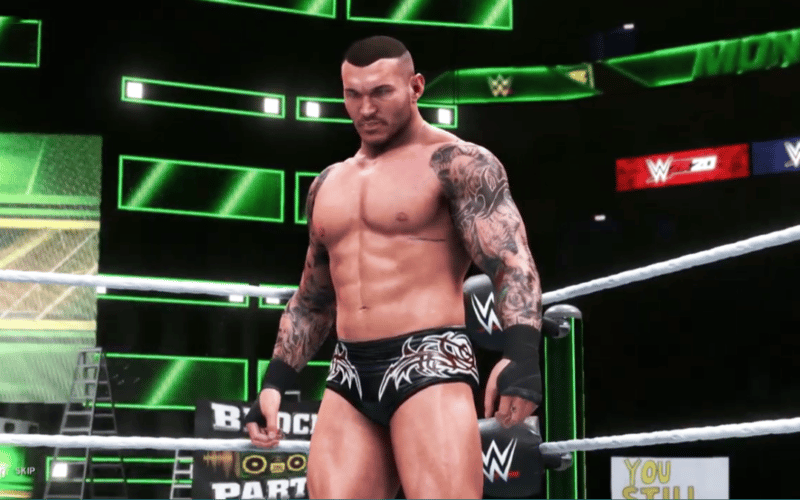
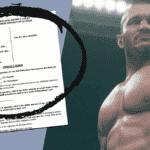
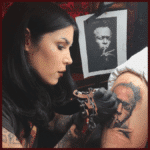




3 comments
Great write-up, Aaron! I’ve been watching this case with great interest, particularly since the court’s wrongly-decided MSJ ruling. I was actually shocked by the court’s incorrect handling of Take-Two’s MSJ argument about their use being de minimis and blogged about this in September:
***
The court questions whether the Seventh Circuit even recognizes this defense to copyright infringement and asserts that neither party cites any Seventh Circuit decisions applying the defense and that the court is aware of none. Again, what? Take-Two, in its brief, had already directed the court to two cases in the opening paragraph of its de minimis use argument:
Copying is de minimis if the amount of “protected material” copied “is so trivial as to fall below the quantitative threshold” for infringement. Isringhausen Imports, Inc. v. Nissan N. Am., Inc., No. 10 Civ. 3253, 2011 WL 6029733, at *6 (C.D. Ill. Dec. 5, 2011); see also G.R. Leonard & Co. v. Stack, 386 F.2d 38, 40 (7th Cir. 1967) (copying five of 90,000 entries in travel guide was de minimis and not infringement).
Catherine ALEXANDER, Plaintiff, v. TAKE-TWO INTERACTIVE SOFTWARE, INC., 2K Games, Inc.; 2K Sports, Inc.; World Wrestling Entertainment, Inc.; Visual Concepts Entertainment; Yuke’s Co., Ltd.; and Yuke’s LA, Inc., Defendants., 2019 WL 8109809 (S.D.Ill.)
I actually went to look up the G.R. Leonard case just to read the section on de minimis use for myself because I had a hard time believing that the Seventh Circuit had never dealt with this issue before. Take-Two was right, of course. Alas, needless to say, the court found against Take-Two on this defense also.
***
My prediction continues to be that Take-Two will win this case on both implied license and fair use grounds. If they somehow draw a bad jury and lose at trial, though, I predict they will appeal, and the trial court’s errors will be corrected by the Seventh Circuit.
Thanks Dan. I recall that Take-Two cited G. R. Leonard and Isringhausen in its summary judgment motion but the court ignored them. Two weeks ago, in her trial brief, Alexander addressed them for the first time:
She claimed that G. R. Leonard & Co. v. Stack did *not* rest on de minimis use. “Instead, the opinion made clear that the court’s decision was based on the doctrine of fair use. ‘The sole issue remaining is whether the extent of defendant’s use of the guide was so great as to exceed the bounds of fair use and thus constitute an infringement.’ G. R. Leonard & Co., 386 F.2d 38, 40 While the Seventh Circuit does indeed use the phrase ‘de minimis,’ this occurs in its discussion of an issue on the analysis for fair use: the amount and substantiality of the portion used in relation to the copyrighted work as a whole. . . . G. R. Leonard never discusses substantial similarity, which is the bedrock issue with regard to de minimis use.”
Alexander conceded that “Isringhausen Import, Inc. does discuss the defense of de minimis use and find that it was adequately plead, [but that] it is not binding on this Court…In addition, the lone in-circuit case it cites on the issue cites no law in its brief mention of the de minimis use defense. . . Tellingly, neither Isringhausen nor Huthwaite cite G. R. Leonard. In addition, neither Isringhausen nor Huthwaite addresses whether or not the Seventh Circuit actually even recognizes the defense. It appears that the courts, and apparently the parties, assumed that it does. Put simply, Isringhausen and Huthwaite are bad law.”
***
So basically, you have cases assuming the test does apply, and while there haven’t been any Seventh Circuit cases to address it squarely, there’s a whole host of out-of-circuit rulings the court could have used for guidance — including Solid Oak Sketches, which has *never* been cited by Judge Yandle.
Plaintiff’s case is flawed, as you’ve said, and ignores boundaries established by the Great Tattoos of Fiction. When Popeye flexes a spinach-enhanced bicep, the rolling tank image expands (and Sousa is typically heard). Is that transformative? If Mr. Orton were to drop significant muscle mass, does that create a derivative work? Queequeg in MOBY DICK and Ray Bradbury’s THE ILLUSTRATED MAN are among the most popular tattooed characters in literature. The films from 1956 and 1969, respectively, depict the best-known versions of those characters’ tattoos. Without the physical stature and contours of the actors, the context, the complementary art direction and lighting, and the personality of the wearer – all of which are transformative – what are their tattoos? Pretty de minimis….